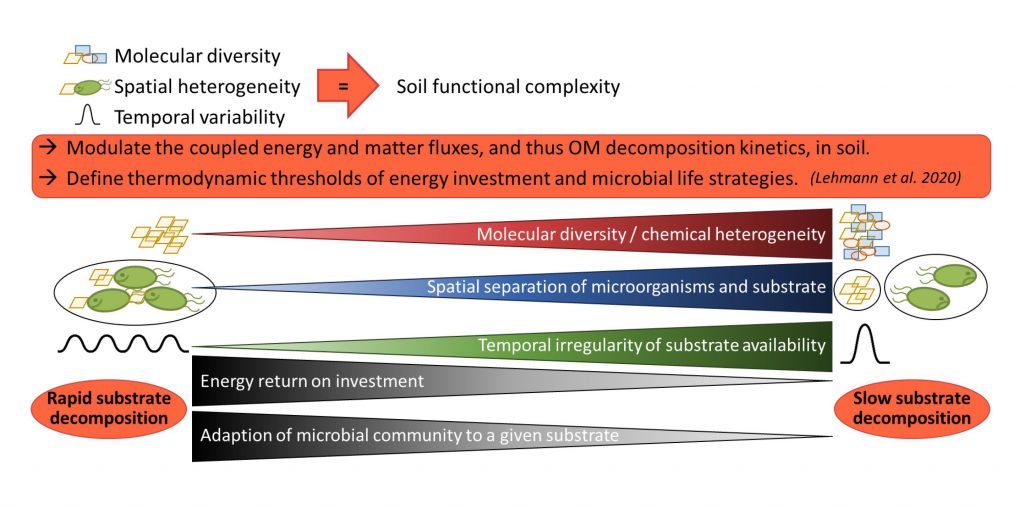Spatial and temporal substrate supply controls energy channelling in the soil system

Natural soils’ functional complexity with regard to molecular diversity, spatial heterogeneity and temporal variability of organic matter (OM) sources is likely a crucial factor affecting energy discharge and carbon (C) consumption in soils as open thermodynamic systems. The majority of research on C cycling in soil was focused on C mass flow through living and non-living soil components so far, neglecting the importance of C as energy source and microbial energy demand. Furthermore, existing research on microbial C partitioning between catabolism and anabolism usually does not account for the effect of spatially heterogeneous and temporally fluctuating substrate availability.
The project “Spatial and temporal substrate supply controls energy channeling in the soil system” (SpatEn) examines the effects of (i) molecular substrate diversity, (ii) spatial heterogeneous substrate addition, (iii) and temporal variations in substrate supply, both as individual impact factors and in combination, on metabolic fluxes through the microbial community. We will determine microbial carbon and substrate use efficiency (CUE, SUE), calorespirometric ratio, and enzyme kinetics as measures for the efficiency of catabolic and anabolic pathways and relative proxy for the investment of the microbial community into extracellular enzymes. Compound specific 13C-PLFA analysis and high-throughput next generation sequencing will enable to link the results to specific microbial groups.
The experimental design consists of four working packages (WPs) conducted under controlled conditions. The incubation studies of WP1 and WP2 will mimic gradients of increasing substrate diversity and spatial heterogeneity (i) either under conditions of strict spatial disconnection of soil patches (ii) or under the modulating impact of hyphal C transport. WP3 simulates irregular substrate supply and different rates of substrate release from hot spots, and WP4 focusses on the combined effects of varying spatial and temporal substrate availabilities. The results of the proposed project will reveal a fundamental understanding of how different degrees of molecular diversity, spatial heterogeneity and temporal variability of a supplied substrate affect OC channeling through anabolism and catabolism of the soil microbial community. Our results will furthermore provide the data basis to include substrate heterogeneity based thermodynamic predictions of microbial growth into C cycling models.